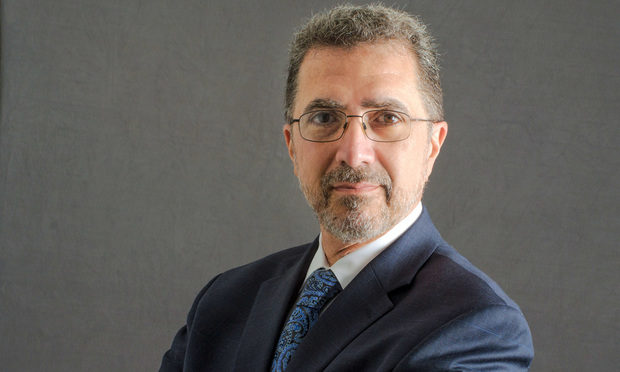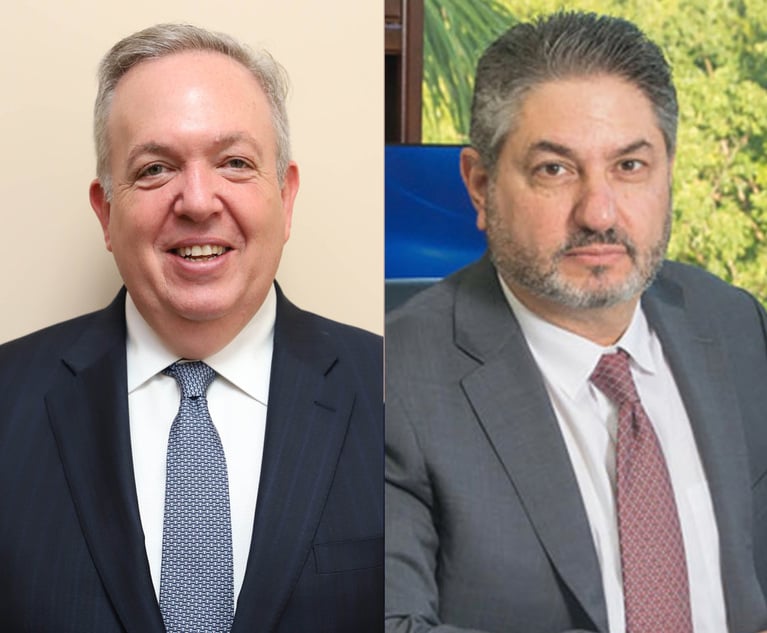Legal Rights in Sugar Valley: Cuban Software Copyrights
Americans who have traveled to Cuba, have seen a beautiful country with crumbling buildings, unreliable electrical power and hard-to-access internet.
May 17, 2018 at 10:16 AM
5 minute read

Americans who have traveled to Cuba, have seen a beautiful country with crumbling buildings, unreliable electrical power and hard-to-access internet. However, they have also met the creative, dynamic and resourceful Cuban people. It therefore does not come as a surprise that despite the infrastructure challenges of life in the Island country, Cubans have eagerly embraced what they can of the internet. Growth in this sector has given birth to a nascent software and internet community that has been dubbed Azucar Valley (Sugar Valley).
For the most part, the internet in Cuba is accessed through mobile devices and public Wi-Fi hotspots. Outside of government or educational institutions, computers and wired internet connections are the exception rather than the norm. Internet access is normally purchased in the form of scratch-off cards of different values sold by the Empresa de Telecomunicaciones de Cuba (ETECSA). The card contains a long string of numbers that must be entered into the login page every time you want to access the internet. The speed is usually dismally slow. Despite the unwieldy and inconvenient way in which internet access is obtained on the island, it is not unusual to be walking on the streets of Havana and suddenly find yourself surrounded by hundreds of people intently tapping away on their phones.
Cubans are so eager to join the digital revolution, that they have developed their own series of mini-internets. A series of networks have been created throughout the island by young individuals running servers, high speed cables and repeaters between the rooftops and windows of the city. The networks, generally known as Street Net or Snet, are tolerated by the authorities and are used to network games and pirated content.
For over a dozen years, Cuban universities and public institutions have developed software for the Cuban market. In the last few years, Cuba's first independently developed video game has begun to draw attention. Not only does the game show a significant amount of creativity, mixing in local religious and cultural iconography, but it also shows the ability of Cubans to privately develop and fund complex software projects. Because of the private nature of the development model, it is one that might obtain U.S. government approval for future work on the island.
So what laws are there to protect software on in Cuba? In the United States, copyrights are often used to protect software code. The Cuban law of copyrights, Law 14, which was enacted in 1977, does not mention software copyrights. Software copyrights were added to the law in 1991, by Joint Resolution 1 of the Ministries of Culture and Heavy Machinery. The law extends protection to databases and software programs, subsequent versions and derivative works, regardless of medium. The copyright lasts for 50 years from publication—or from creation if it is never published. It is also limited to the code and not the concept, ideas or mathematical formulas expressed in the code.
As in the case of Law 14, Resolution 1 divides rights into three types. Those applicable to independent creations, those applicable to works made for hire and those applicable to works made in the context of employment. These three rights, in turn, consist of combinations of three other rights: the right to exploit, moral rights and title rights.
The independent creator of a work has the right to contract for its exploitation, to be identified with the work and to control other rights to the work. The right of a creator of a work made for hire will depend on the contract governing the creation. The copyright and right of exploitation to a work made by an employee belongs to the employer. In a work made for hire, the creator will be entitled to at least 10 percent of earnings made from the work. In the case of a work made by an employee, his salary is deemed sufficient compensation.
As in the case of other creative works under law 14, a copyright need not be registered to be protected. However, registration with the National Copyright Registry provides certain presumptive advantages as to authorship and date of creation in the event of a dispute.
While this law has created a framework for extending copyrights to software, copyrights in Cuba have not kept up with technological changes. One major gap is the absence of an anti-counterfeiting law at either the civil or criminal level. Another that had been a major topic of discussion in recent years is the lack of a mechanism for recognizing and enforcing open source licenses in Cuba.
The new president of Cuba, Miguel Diaz-Canel, was educated as an electrical engineer and is familiar with the technology and its potential. He has stated that he is committed to making digital access to government and medical information. However, he has also expressed suspicion and hostility to what he called “pseudo-cultural, banal and vulgar content on the internet.” One would expect political dissent to be concealed in that description and that the government will pursue control of the web as other communist countries have done.
Jorge Espinosa is the managing partner with the Miami intellectual property boutique law firm of Espinosa Martinez. He focuses his practice on the domestic and international protection of trademarks, patents and copyrights. He may be reached at [email protected].
This content has been archived. It is available through our partners, LexisNexis® and Bloomberg Law.
To view this content, please continue to their sites.
Not a Lexis Subscriber?
Subscribe Now
Not a Bloomberg Law Subscriber?
Subscribe Now
NOT FOR REPRINT
© 2025 ALM Global, LLC, All Rights Reserved. Request academic re-use from www.copyright.com. All other uses, submit a request to [email protected]. For more information visit Asset & Logo Licensing.
You Might Like
View All
SEC Whistleblower Program: What to Expect Under the Trump Administration
6 minute read
Turning the Shock of a January Marital Split Into Effective Strategies for Your Well-Being
5 minute read

Trending Issues in Florida Construction Law That Attorneys Need to Be Aware Of
6 minute readTrending Stories
- 1Troutman Pepper, Claiming Ex-Associate's Firing Was Performance Related, Seeks Summary Judgment in Discrimination Suit
- 2Law Firm Fails to Get Punitive Damages From Ex-Client
- 3Over 700 Residents Near 2023 Derailment Sue Norfolk for More Damages
- 4Decision of the Day: Judge Sanctions Attorney for 'Frivolously' Claiming All Nine Personal Injury Categories in Motor Vehicle Case
- 5Second Judge Blocks Trump Federal Funding Freeze
Who Got The Work
J. Brugh Lower of Gibbons has entered an appearance for industrial equipment supplier Devco Corporation in a pending trademark infringement lawsuit. The suit, accusing the defendant of selling knock-off Graco products, was filed Dec. 18 in New Jersey District Court by Rivkin Radler on behalf of Graco Inc. and Graco Minnesota. The case, assigned to U.S. District Judge Zahid N. Quraishi, is 3:24-cv-11294, Graco Inc. et al v. Devco Corporation.
Who Got The Work
Rebecca Maller-Stein and Kent A. Yalowitz of Arnold & Porter Kaye Scholer have entered their appearances for Hanaco Venture Capital and its executives, Lior Prosor and David Frankel, in a pending securities lawsuit. The action, filed on Dec. 24 in New York Southern District Court by Zell, Aron & Co. on behalf of Goldeneye Advisors, accuses the defendants of negligently and fraudulently managing the plaintiff's $1 million investment. The case, assigned to U.S. District Judge Vernon S. Broderick, is 1:24-cv-09918, Goldeneye Advisors, LLC v. Hanaco Venture Capital, Ltd. et al.
Who Got The Work
Attorneys from A&O Shearman has stepped in as defense counsel for Toronto-Dominion Bank and other defendants in a pending securities class action. The suit, filed Dec. 11 in New York Southern District Court by Bleichmar Fonti & Auld, accuses the defendants of concealing the bank's 'pervasive' deficiencies in regards to its compliance with the Bank Secrecy Act and the quality of its anti-money laundering controls. The case, assigned to U.S. District Judge Arun Subramanian, is 1:24-cv-09445, Gonzalez v. The Toronto-Dominion Bank et al.
Who Got The Work
Crown Castle International, a Pennsylvania company providing shared communications infrastructure, has turned to Luke D. Wolf of Gordon Rees Scully Mansukhani to fend off a pending breach-of-contract lawsuit. The court action, filed Nov. 25 in Michigan Eastern District Court by Hooper Hathaway PC on behalf of The Town Residences LLC, accuses Crown Castle of failing to transfer approximately $30,000 in utility payments from T-Mobile in breach of a roof-top lease and assignment agreement. The case, assigned to U.S. District Judge Susan K. Declercq, is 2:24-cv-13131, The Town Residences LLC v. T-Mobile US, Inc. et al.
Who Got The Work
Wilfred P. Coronato and Daniel M. Schwartz of McCarter & English have stepped in as defense counsel to Electrolux Home Products Inc. in a pending product liability lawsuit. The court action, filed Nov. 26 in New York Eastern District Court by Poulos Lopiccolo PC and Nagel Rice LLP on behalf of David Stern, alleges that the defendant's refrigerators’ drawers and shelving repeatedly break and fall apart within months after purchase. The case, assigned to U.S. District Judge Joan M. Azrack, is 2:24-cv-08204, Stern v. Electrolux Home Products, Inc.
Featured Firms
Law Offices of Gary Martin Hays & Associates, P.C.
(470) 294-1674
Law Offices of Mark E. Salomone
(857) 444-6468
Smith & Hassler
(713) 739-1250






